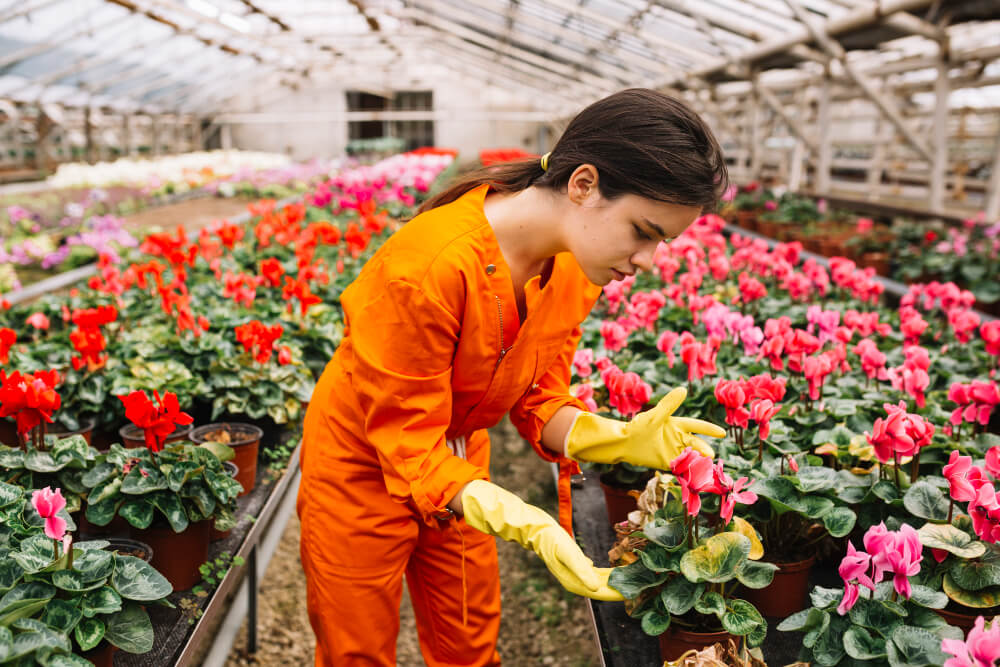
Floriculture, often heralded as the sunrise industry of India, is witnessing unprecedented growth, marking a significant transformation in the country’s agricultural sector. With an estimated growth trajectory set to reach USD 5.9 billion by 2030, floriculture in India is not just about cultivating and selling flowers; it’s a testament to the country’s rich biodiversity, climatic versatility, and the boom for flowers both domestically and internationally. This blog aims to discuss the essence of floriculture, its characteristics, importance, emerging trends, and the challenges it faces in the Indian context.
Introduction to Floriculture
Floriculture, a branch of horticulture, is an age-old farming practice that has evolved into a crucial agri-business across 140 countries, including India. It includes the cultivation of flowers and ornamental plants for commercial purposes. Floriculture caters to many sectors, such as cut flowers, potted plants, nursery plants, and the extraction of essential oils. India’s floriculture industry, with its vast floral diversity and extensive demand, is projected to grow significantly, driven by an environment-friendly lifestyle and the increasing acceptance of flowers in various cultural and social settings.
Characteristics of Floriculture in India
The floriculture sector in India is distinguished by its floral diversity, extensive demand, and favourable climatic conditions. The country’s vast land size and diverse climate offer an ideal environment for a wide variety of flowers and plants, contributing to its status as one of the top flower exporters.
States like Tamil Nadu, Andhra Pradesh, and Madhya Pradesh lead in production, contributing to nearly 50% of the total flower output. The industry caters to a growing domestic demand fueled by changing lifestyles, rising incomes, and rapid urbanization, as well as an export-oriented market with major destinations including the Netherlands, the UAE, the UK, and the US.
The Growth and Importance of Floriculture in India
The floriculture industry in India has seen significant growth due to favorable climatic conditions, rich cultural traditions, and government support through incentives and subsidies. Its importance extends beyond the economic, touching upon social, cultural, and environmental aspects. Floriculture contributes to employment generation and foreign exchange earnings and offers an alternative source of income for farmers, promoting rural development and environmental sustainability. Moreover, the sector is pivotal in cultural traditions, ceremonies, and festivals across India.
Emerging Trends in Floriculture
The Indian floriculture sector is experiencing a shift driven by changing consumer preferences, technological advancements, and the rise of e-commerce. Urbanization and the influence of Western cultures have increased the demand for floriculture gardens, leading to the development of more indigenous varieties and the adoption of innovative farming techniques like hydroponics and tissue culture. This diversification strategy is enhancing the yield and quality of flowers and catering to the rising demand for exotic and unique floral arrangements.
Challenges Facing Floriculture in India
Despite its potential, the floriculture industry in India faces several challenges, including a need for more information on cultivation techniques, obsolete technology, and inadequate infrastructure. The contribution of this sector to the global floriculture market is relatively small, highlighting the need for investment and government initiatives to address these challenges and promote sustainable growth.
Conclusion
The floriculture industry in India is at a pivotal juncture, with the potential to significantly impact the country’s economy, culture, and environment. As it embraces new technologies and sustainable practices, the industry is poised for further growth, offering opportunities for employment, innovation, and environmental conservation. With government support and a focus on overcoming existing challenges, floriculture in India can continue to flourish, contributing to the well-being of individuals and communities alike.
Floriculture in India is more than just the cultivation of flowers; it’s a vibrant industry with deep cultural roots, significant economic potential, and a bright future. As it continues to evolve, it promises to bring more color, fragrance, and beauty into the world while supporting sustainable development and enhancing the quality of life for millions.
